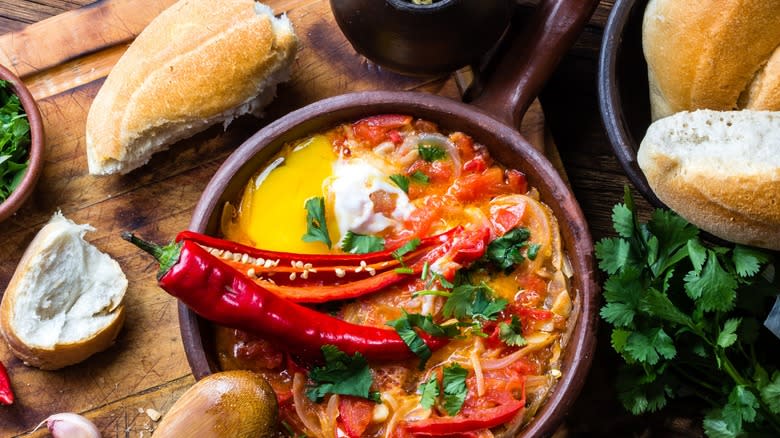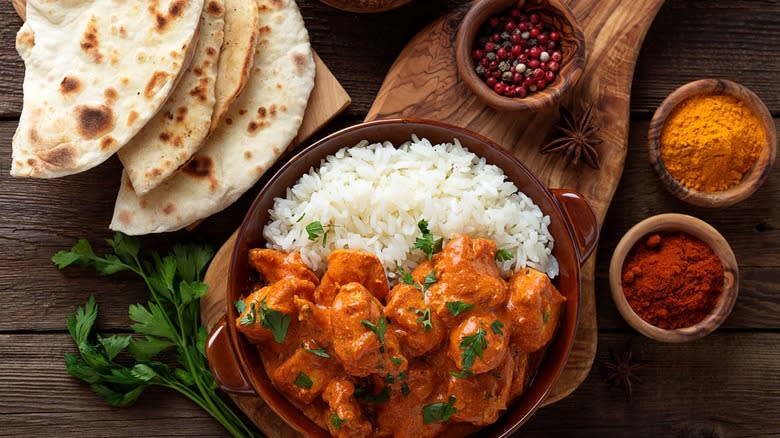Serve Spicy Dishes With Starchy Sides To Temper Some Of The Heat

Spicy food can be a delight, adding an exhilarating burst of flavors and excitement to dining. The fiery kick of chilies, the sharp bite of pepper, and the subtle warmth of other spices can transform an ordinary dish into something extraordinary. However, as much as spicy food can tantalize the taste buds, it's not always a comfortable experience for everyone. That's why the intense flavors of these spices are often balanced with starchy sides to make the dish more enjoyable.
The heat in spicy foods comes from compounds like capsaicin in chili peppers. This compound interacts with the pain receptors in our mouths, the same receptors that react to physical heat, causing that burning sensation. For some, this feeling is thrilling and enjoyable. Yet, for others, it can be overwhelming, leading to discomfort and even digestive issues.
This varying tolerance to spice presents a culinary challenge on how to make spicy dishes enjoyable for everyone. That's where the role of starchy sides becomes crucial. These sides don't just act as fillers or add-ons; they play a pivotal role in balancing the heat and making the dish more palatable for a wider audience. Let's look at how these foods help with the spice sensation.
Read more: 21 Delicious Ways To Use Up Leftover Rice
How Starchy Foods Help Temper Spiciness

Starchy sides like rice, potatoes, bread, and pasta are more than just accompaniments; they are the unsung heroes when it comes to enjoying spicy foods. When you eat a spicy dish, and the capsaicin binds to the pain receptors in your mouth, causing a sense of burning, starchy foods work in two ways to combat this heat. First, their blandness contrasts with the intensity of the spice, providing a break for your taste buds. This contrast can enhance the overall flavor experience, allowing you to enjoy the spiciness without being overwhelmed.
Second, starchy foods can help physically absorb the capsaicin. When you alternate bites of spicy food with starchy sides, the starch binds to the oils and capsaicin molecules, making them less available to bind to your pain receptors. This doesn't completely neutralize the heat, but it significantly reduces its impact, allowing you to enjoy the spiced flavor without the full intensity of the burn.
In many cultures, specific starchy sides are traditionally served with spicy dishes, indicating a long-standing recognition of this beneficial pairing. For example, steamed white rice with Thai chicken curry, fluffy mashed potatoes with spicy chili, or tasty parathas or naans with various Indian dishes. So the next time you want to make a spicy dinner for your family or friends, remember to include a bland, starchy side to balance the heat.
Read the original article on Tasting Table.

